GM Captive Finance Push Explained: The General Wants More Subprime Business
When we first heard that GM was eying a return to in-house financing, our first reaction was to worry that
the potential for falling back into old bad habits can’t be ignored.
Clearly our concern wasn’t wasted, as the AP [via Google] reports that The General’s major motivation for considering re-creating a captive lender is to chase subprime business its current major lender won’t touch. And considering that that lender is GM’s bailed-out former captive finance lender GMAC (now Ally Financial), which was badly burned by subprime mortgages, it’s not surprising that GM is frustrated by GMAC’s tentative approach. But should The General charge into the low-standard lending sectors where Ally fears to tread?
At the moment, GM’s window of opportunity for forming an in-house finance unit that could sweep up subprime business is as good as it is likely to get. Not only is the overall market for cars struggling to regain its footing after a disastrous 2009, Toyota has responded to its recent recall scandal by offering unprecedented incentives and finance deals. GM may be making money in this environment thanks to deep cost-cutting and a bankruptcy-rinsed balance sheet, but its volume isn’t increasing the way leadership would like to see, despite exceeding industry incentive-per-vehicle averages for all but one of the last 16 months .As a result, GM’s market share is remaining stagnant.
New product coming through development is ultimately responsible for improving volume and market share, but aside from the Cruze which launches this year, there’s not a lot of big-volume new products planned for release over the next 9-12 months. And that’s the timeframe for GM’s likely IPO, which will likely require a minimum of two back-to-back quarterly profits, and marked improvements in volume. Until the Cruze comes, GM has few other options for “moving the needle” in its business, except for targeting subprime buyers.
GM’s North American boss Mark Reuss points out that Honda gets 20 percent of its sales from subprime borrowers, whereas GM gets a mere one percent of its business from these riskier lenders (through April, GM has sold 659,475 units whereas Honda sold 331,597). Reuss says the difference is captive finance.
They’re able to finance their cars at a much lower level than we are. I’m not sure what the answer is. But it would sure help my sales, the company’s sales in North America, if we were able to get access.
Specifically, it will help sales soon. Credit raters Experian say 16 percent of all car loans in the fourth quarter of 2009 were subprime, a distinction it bestows on borrowers with credit ratings below 620 on its 300-800 scale. Though Ally won’t reveal how many subprime loans it approves now, it does disclose that only 12 percent of its Q1 auto business was in leases. Ally spokesfolks say that
As the financial crisis has eased and as the credit markets come back we have been able to broaden our offerings and look at the credit spectrum more broadly
But that’s clearly not happening fast enough for GM. Though Reuss stops short of admitting GM is pressuring Ally for more subprime business, he did indicate that the topic was “an area of opportunity.” But if government-owned Ally isn’t interested in underwriting GM’s volume gains with risky loans but also isn’t interested in seeing its auto lending business bought by GM, there’s trouble brewing. After all, that would leave GM with only two options: partnering with another bank, or starting a new captive lender. Either way, a new GM captive lender would likely force Ally into offering more subprime business anyway, or face losing its huge percentage of GM business.
Either way, GM’s understandable impatience with government ownership is pushing it into risky territory. And the dangers of redlining a car business through risky loans isn’t limited to the risk of default: brand degradation, falling resale values, and boom-bust bubbles all come with the territory. Which is not to say GM is incapable of handling more subprime business… but rushing into risky positions in order to goose short-term performance has been a consistent bugbear of The General’s.
And with state-owned Ally hanging in the balance, the political calculations won’t be easy either: should Ally be forced to sacrifice its most profitable business that GM might live to pull off an IPO? Or should GM forgo in-house lending, and struggle along without putting up the kind of performance that could inspire a successful IPO, until the next downturn forces another bailout? Meanwhile, what about Chrysler? In any of these scenarios, the taxpayers lose. And even if there is a way to get GM to fatten itself on in-house, subprime loans without killing Ally and Chrysler, there’s still the longer-term default risk inherent in the subprime strategy, which could also bring down the General in the case of another downturn.
There are no easy answers in this mess, but there is plenty of past behavior on which to predict future performance. History, with apologies to William F. Buckley, is standing astride General Motors and shouting “stop.”
More by Edward Niedermeyer
Latest Car Reviews
Read moreLatest Product Reviews
Read moreRecent Comments
- Theflyersfan Honda, Toyota, Nissan, Hyundai, and Kia still don't seem to have a problem moving sedans off of the lot. I also see more than a few new 3-series, C-classes and A4s as well showing the Germans can sell the expensive ones. Sales might be down compared to 10-15 years ago, but hundreds of thousands of sales in the US alone isn't anything to sneeze at. What we've had is the thinning of the herd. The crap sedans have exited stage left. And GM has let the Malibu sit and rot on the vine for so long that this was bound to happen. And it bears repeating - auto trends go in cycles. Many times the cars purchased by the next generation aren't the ones their parents and grandparents bought. Who's to say that in 10 years, CUVs are going to be seen at that generation's minivans and no one wants to touch them? The Japanese and Koreans will welcome those buyers back to their full lineups while GM, Ford, and whatever remains of what was Chrysler/Dodge will be back in front of Congress pleading poverty.
- Corey Lewis It's not competitive against others in the class, as my review discussed. https://www.thetruthaboutcars.com/cars/chevrolet/rental-review-the-2023-chevrolet-malibu-last-domestic-midsize-standing-44502760
- Turbo Is Black Magic My wife had one of these back in 06, did a ton of work to it… supercharger, full exhaust, full suspension.. it was a blast to drive even though it was still hilariously slow. Great for drive in nights, open the hatch fold the seats flat and just relax.Also this thing is a great example of how far we have come in crash safety even since just 2005… go look at these old crash tests now and I cringe at what a modern electric tank would do to this thing.
- MaintenanceCosts Whenever the topic of the xB comes up…Me: "The style is fun. The combination of the box shape and the aggressive detailing is very JDM."Wife: "Those are ghetto."Me: "They're smaller than a Corolla outside and have the space of a RAV4 inside."Wife: "Those are ghetto."Me: "They're kind of fun to drive with a stick."Wife: "Those are ghetto."It's one of a few cars (including its fellow box, the Ford Flex) on which we will just never see eye to eye.
- Oberkanone The alternative is a more expensive SUV. Yes, it will be missed.



















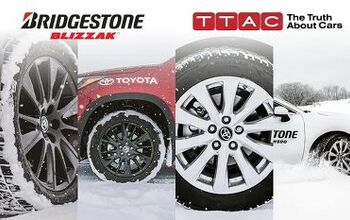




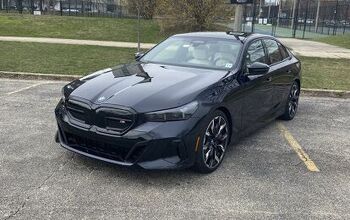

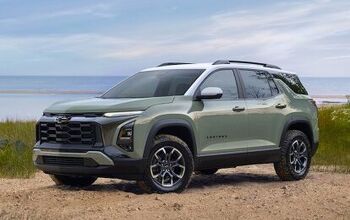

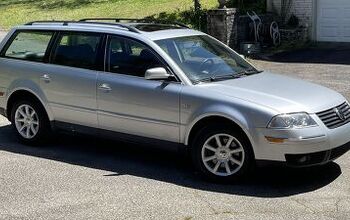




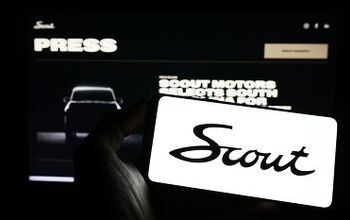
Comments
Join the conversation
Honda and others that offer subprime financing do so at their own risk. And they continue to make money doing it. GM and Chrysler have lost their shirts when it comes to their financing practices. And now we taxpayers are going to have to underwrite their incredibly poor financing/management practices. GM and Chrysler need to struggle without more government support to get their act together. Is there anyone in their right mind that would trust the con men to be honest and actually go thru the hard work necessary to build their own brands. GM is still acting like the old GM and really hasn't learned their lesson and probably never will. These guys should have been reorganized and not bailed out. Mark my word, we will have to bail out these turkeys again some day. Maybe by then there will be common sense politicians that will say 'no'. But don't hold your breath or count on it.
GM needs a captive finance company with a business model of 1979 or 1989...not the 1999 or 2009. BuickMan's dad moved a hellvu lot of cars out of Brockport on "old" GMAC financing. We bought what we were capable of collecting.